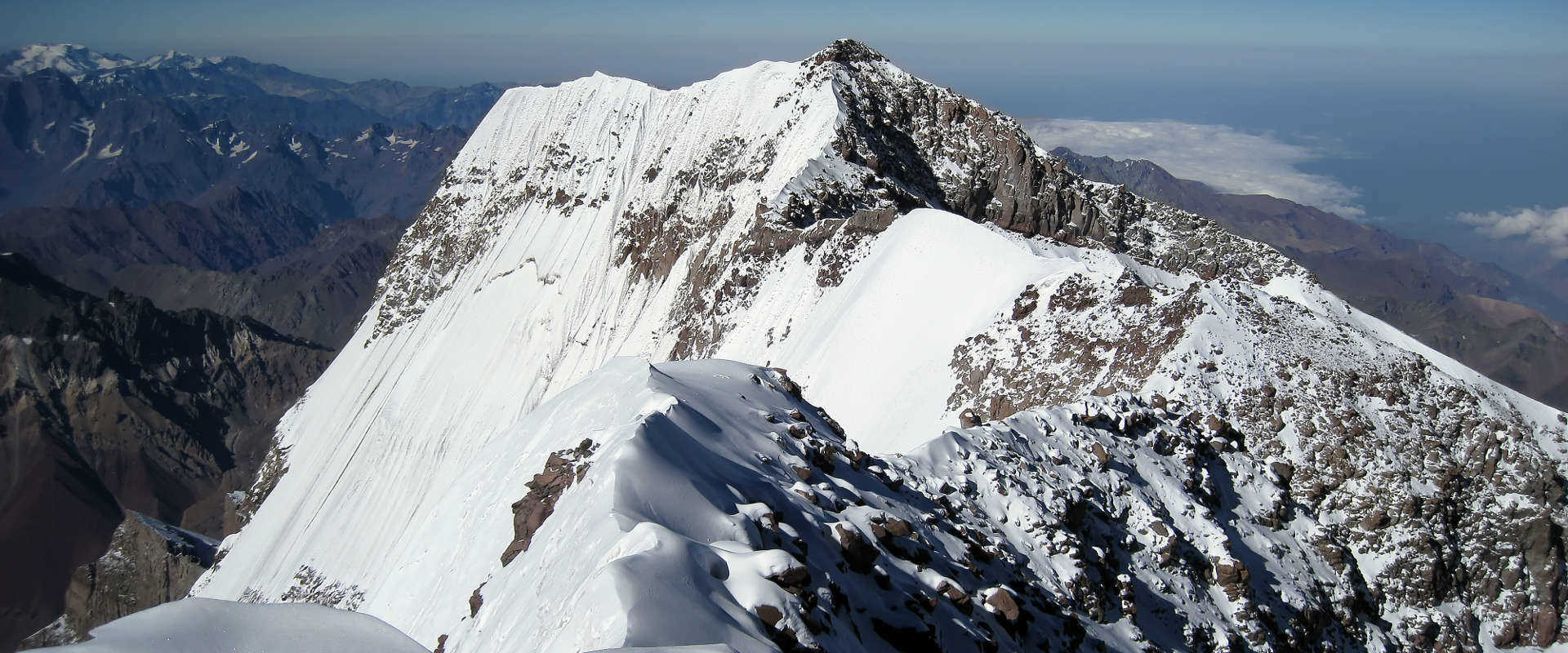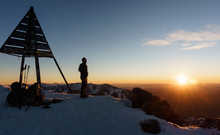Climb Aconcagua
- Kandoo Summits

Contact
our UK team

Arrival in Mendoza, transfer from the airport to your hotel for the night. Enjoy the rest of the day exploring the bustling city of Mendoza, the centre of wine-making in Argentina. With wide tree lined streets and plazas, the city is easily explored on foot with plenty of shops and restaurants. Beware 2.00pm – 5.00pm is siesta time!
The team and the guides get to know each other. Activities such as gear check, permit procedures and equipment sorting and packing are carried out on this day. Your duffel bags will be split here into kit to be carried to Confluenzia and kit to be carried to Plaza de Mulas (your expedition pack can go straight to Plaza de Mulas as you will not need this until then).
Reminder: you will need two large duffle bags, a small trekking pack and an expedition backpack.
Hike to Confluencia camp(3.390 m/ 11,300 ft). Private transfer from Mendoza to our warehouse in Penitentes. (there are lockers and storage place available for our guests). You can have coffee and snacks while the guides get the mule loads ready. Another 15 minutes ride takes the team to Horcones. This is the trailhead and also where the Park rangers will check everybody’s permits. An easy hike (carrying only a daypack) leads to Confluencia, the first camp of the Horcones Valley routes.
Our main objective today is one of acclimatization. We get our first clear view of the imposing south face of Aconcagua as we trek to Plaza de Francia (4050m), before returning to Confluencia for the night.
A good opportunity to get ready for the challenge ahead!
Today we trek to our base camp at Plaza de Mulas. This is the toughest day so far and climbs 1000m from the start point. You will be glad to hit the camp where the additional ascent team will meet you and be your ascent team. A mess tent will be set up for all meals, briefings and general use.
Today we rest! Make sure you take plenty of water on board and eat well. This is an acclimatisation day and an opportunity to rest after the prior days’ exertions. Showers are available, as is the opportunity to phone home from the hotel nearby.
This is a second day of acclimatisation. From Plaza de Mulas we leave to climb Bonete Peak (5004m) which affords you a clear view of the route almost all the way to Aconcagua before descending. You will remain overnight at Plaza de Mulas base camp.
Our first serious outing on the flanks of the mountain where we make our way to camp 1, Plaza Canada (5050m). We will carry some of the expedition gear and food required up to the site and cache them before returning to the Plaza de Mulas.
This is your last day of rest and acclimatisation at base camp before we ascend Aconcagua. This is the day to finalise your gear and make preparations for the climb.
Moving up to Camp 1 allows us to spend our first night on the mountain. This should feel a lot easier than the first outing and the benefits of steady acclimatisation become real.
Assisted by our porters, who will carry the tents and most of our gear, we set off for 'Nido de Condores'(5560m), the condors nest, to set up Camp 2. From here we can see Aconcagua and the canaleta that leads to the col between the twin peaks.
Today we climb to our highest point on the mountain yet to Camp 3, the Colera camp (5970m). It is exposed and can be cold and windswept at times. There are some wonderful views of the high Andean peaks which warrant more than a second glance. This is our final camp prior to making the summit push.
Today's the day! An early starts underpins the summit attempt and the most arduous day of the expedition. Climbing the North ridge to the Independencia Refuge (6250m) to meet the sunrise, we follow the route to the base of the canaleta, a 300m scree climb leading to the summit ridge where you will appreciate the early start if it’s still frozen. Often windy and cold, this is where your gear earns its value. Taking about an hour of hugely demanding effort, we reach the Cresta del Guanaco, the ridge joining the South Summit (6930m) to the North Summit (6960m), before we push for the aluminium cross that marks the peak's high point. From here we descend back to Camp 3 for a celebration, or as is more likely, a well deserved sleep!
One of two spare days. The lead guide will use these days to the best effect in securing summit success for the team.
One of two spare days. The lead guide will use these days to the best effect in securing summit success for the team.
We make our return from Camp 3 all the way down to base camp. Taking anything from 3 to 7 hours for the walk down to Plaza de Mulas, the crew will welcome you back for a celebration dinner.
Today we make our way downhill to the ranger station where we will be met for the final drive back to Mendoza, after collecting our gear from Penitentes. Once in Mendoza we will check in at our hotel and look for a suitable venue to celebrate our success.
Transfer to the airport is included for your return or onward journey with happy memories of your expedition.
Looking for training advice or a training plan in
preparation for this trip? We'd recommend checking out Kate Sielmann and
her coaching programs that are specific to mountaineering and trekking
training. Find more details here.
| From | To | Price | Availability | Book | Enquire |
|---|---|---|---|---|---|
| 15/12/2024 | 02/01/2025 | £5,549 $7,215 |
Available
|
Book now | Enquire now |
| 29/12/2024 | 16/01/2025 | £5,549 $7,215 |
Available
|
Book now | Enquire now |
| 12/01/2025 | 30/01/2025 | £5,549 $7,215 |
Available
|
Book now | Enquire now |
| 26/01/2025 | 13/02/2025 | £5,549 $7,215 |
Available
|
Book now | Enquire now |
Want to ask us a question or book a private trip? Don't hesitate to contact us!
Contact us